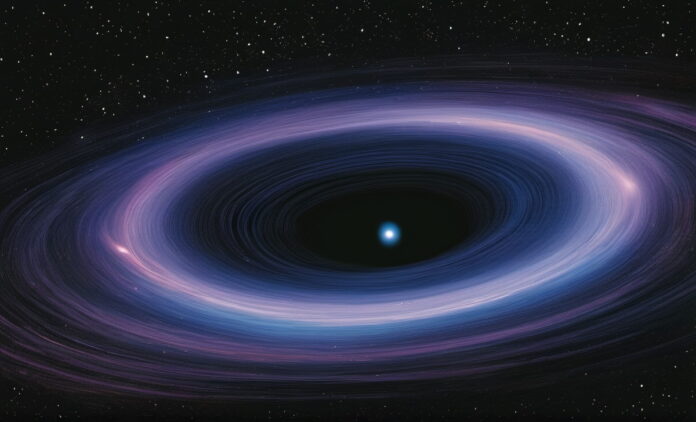Supermassive black holes are some of the most fascinating and mysterious objects in the universe. Imagine something so powerful that it can pull in everything around it, even light. These giants can be millions or even billions of times heavier than our Sun!
What is a Black Hole?
A black hole is a place in space where gravity is so strong that nothing, not even light, can escape from it. This happens because a lot of matter gets squeezed into a very small space. This can occur when a big star dies and collapses in on itself.
Supermassive Black Holes: The Giants
Supermassive black holes are the largest type of black holes. They usually sit at the center of galaxies, including our own Milky Way. The one at the center of our galaxy is called Sagittarius A*. It’s about 4 million times more massive than the Sun!
Scientists are still trying to figure out exactly how supermassive black holes form. One idea is that they grow from smaller black holes that merge together. Another possibility is that they were formed in the early universe, shortly after the Big Bang.
What Do They Do?
Supermassive black holes can have a huge impact on their surroundings. They pull in gas and stars, which can form a bright disk of light called an accretion disk. When this happens, they can outshine entire galaxies!
Sometimes, these black holes can send out powerful jets of particles traveling at nearly the speed of light. These jets can be millions of light-years long and affect the formation of stars in the galaxy.
How Do We Know They’re There?
We can’t see black holes directly because light cannot escape them. However, we can observe their effects on nearby stars and gas. For example, if we see stars orbiting rapidly around a seemingly empty space, it’s a good clue that a black hole might be there.
Why Are They Important?
Supermassive black holes help us understand more about the universe and how galaxies form and evolve. They might also hold clues about the nature of gravity and the fabric of space and time itself.
In recent years, scientists have even managed to take pictures of the shadow of a black hole. In 2019, the Event Horizon Telescope captured an image of the supermassive black hole in the galaxy M87. This was a groundbreaking achievement in astronomy!
Interesting Facts
- Bigger Than Big: The largest known supermassive black hole, TON 618, is estimated to be 66 billion times the mass of the Sun. That’s incredibly huge!
- Fast Spin: Some supermassive black holes spin incredibly fast. The black hole in the galaxy NGC 1365 spins at nearly the speed of light!
- Time Travel: The extreme gravity of a supermassive black hole warps space and time around it. If you could orbit close to one, time would pass much slower for you compared to someone far away. This is a real-life effect predicted by Einstein’s theory of relativity.
- Quasars: Some supermassive black holes are quasars, which are incredibly bright objects in the universe. A single quasar can be 1,000 times brighter than the entire galaxy it resides in!
- Galactic Dance: Galaxies with supermassive black holes often merge. When this happens, their central black holes can also merge, creating an even larger black hole. The resulting collision can release massive amounts of energy in the form of gravitational waves.
- Invisible Giants: Despite their massive size, supermassive black holes are invisible. We only know they’re there because of their influence on nearby stars and gas.
- Old Timers: Some supermassive black holes are ancient, formed just a few hundred million years after the Big Bang. This makes them almost as old as the universe itself!
The Endless Curiosity
The study of supermassive black holes is still full of mysteries. Every discovery brings new questions and helps us learn more about the universe we live in. So, next time you look up at the night sky, remember that somewhere out there, hidden in the heart of galaxies, these giant cosmic engines are at work, shaping the cosmos in ways we are just beginning to understand.
